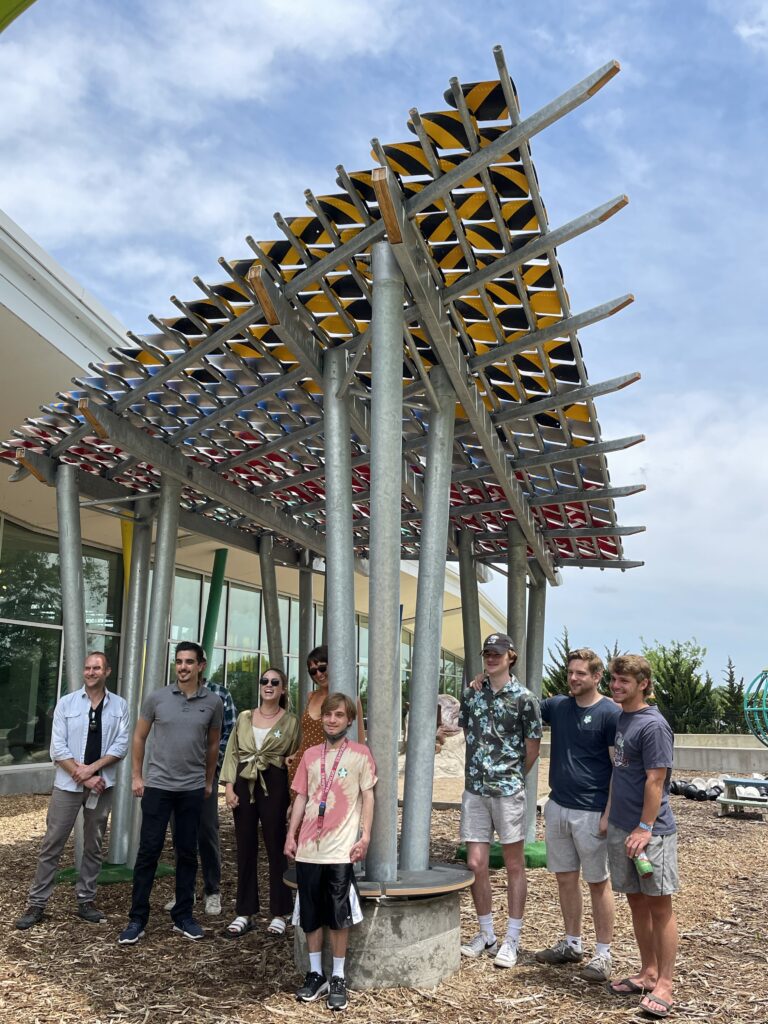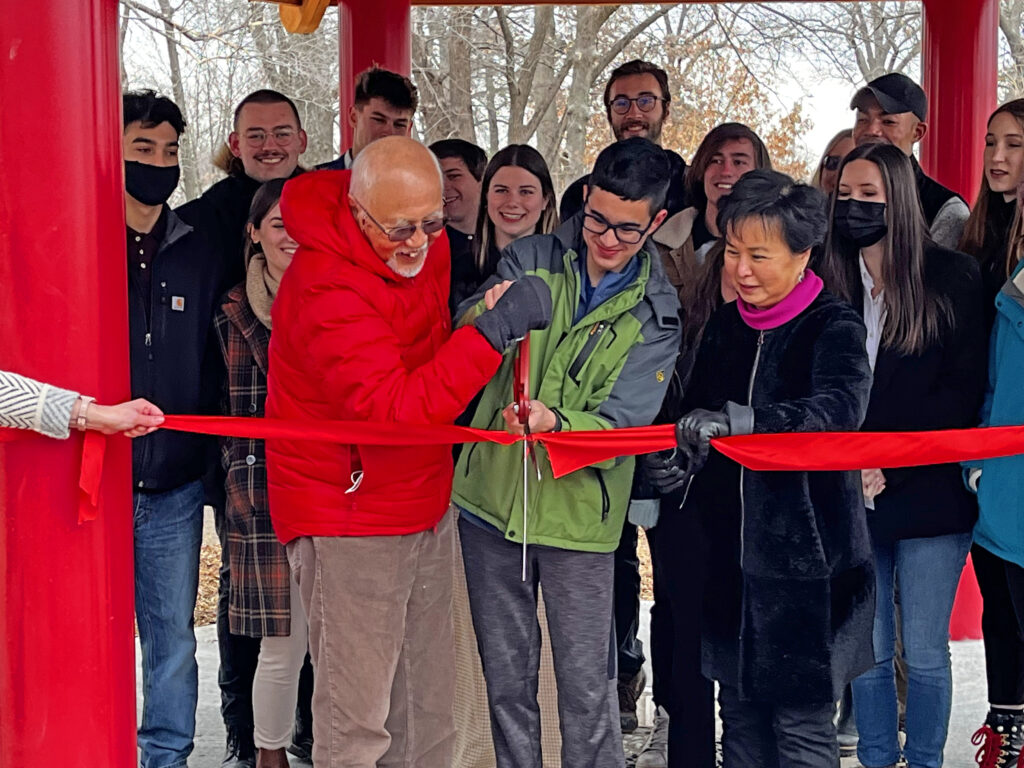
The Kansas Children’s Discovery Center is throwing a little shade at its guests in 2022.
That’s because the Discovery Center on Friday, May 13, unveiled a new, scaly roof on its Reptilian Pavilion that offers a cool place to play during the summer. The project began in 2020, with students from the University of Kansas School of Architecture and Design starting to design the pavilion. Construction began during spring 2021 with the base structure, and was then completed this spring by eight KU architecture students and presented to the public during an informal open house.
The student volunteers originally planned to use terra cotta tiles for the roof, according to KU associate professor Keith Van de Riet, but decided to instead go with recycled, aluminum traffic signs that were shaped to look like scales by the students. Van de Riet oversaw the project, as well as the New Years Pavilion that was constructed by another group of KU architecture students and unveiled in February 2022.

